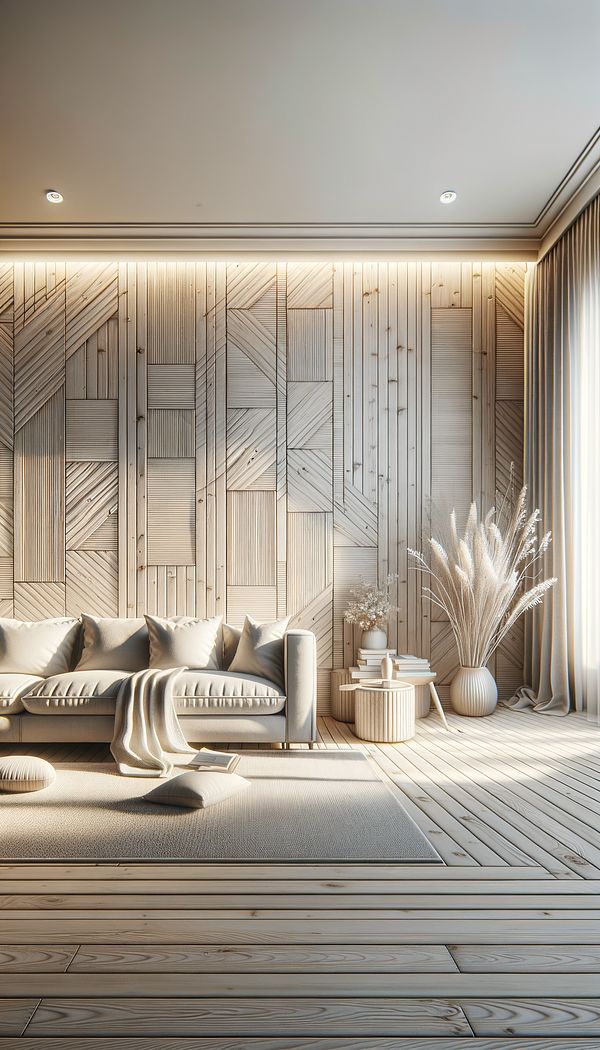What is Matchboarding?
Matchboarding is a method of paneling walls and ceilings using long, narrow planks of wood.
Description
Matchboarding, in the realm of interior design, refers to a specific technique where long and narrow wooden planks are joined together edge to edge to create a continuous, even surface. This surface is typically used for walls and ceilings, lending a distinctive, linear aesthetic. The closely fitted planks can be installed either vertically, horizontally, or diagonally, offering variability in the visual texture and directional flow of a room.
The beauty of matchboarding lies in its versatility and the warmth it imparts to spaces. The natural wood grain visible through matchboarding adds depth and character, making each installation unique. Beyond its aesthetic appeal, matchboarding also has practical benefits. It can provide additional insulation and soundproofing thanks to the tight fit between the planks.
Matchboarding can be found across various design styles, from rustic cabins and traditional homes to contemporary, minimalist spaces. The choice of wood type, plank size, and finish allows matchboarding to be tailored to fit a wide range of interior styles.
Usage
Matchboarding is commonly used in rural or rustic settings, adding a cozy, cabin-like feel to interiors. It's also seen in contemporary designs, where the sleek lines of the planks can provide a clean, minimalist backdrop. In public spaces like cafes or boutiques, matchboarding can introduce a warm, inviting atmosphere.
FAQs
-
Is matchboarding suitable for all types of rooms?
Yes, matchboarding can be adapted to suit any room, offering both aesthetic and practical benefits. However, the wood type and finish should be chosen with the room's conditions in mind, especially in damp areas like bathrooms.
-
Can matchboarding be painted or stained?
Absolutely. Matchboarding can be left natural, stained, or painted to fit your interior design scheme. Staining highlights the wood’s natural beauty, while painting can offer a more uniform or colorful look.
-
Is matchboarding easy to install?
Matchboarding installation can be straightforward for those with some DIY skills but may require precision to ensure the planks are aligned correctly. Professional installation is recommended for the best results.
Practical Application
For those considering matchboarding for their home or project, focus on choosing the right wood type and finish to suit your space. Consider the direction of the planks to complement the room's dimensions and layout. A horizontal layout can make a room appear wider, while a vertical installation can add the illusion of height.
-
Design Styles478 articles
-
Materials & Textiles360 articles
-
Wall Treatments & Finishes157 articles
-
Spanish RenaissanceSpanish Renaissance refers to a period and style in interior design characterized by ornate decorations, rich colors, and intricate details.
-
PVC - Polyvinyl ChloridePVC, or Polyvinyl Chloride, is a versatile synthetic plastic polymer used extensively in interior design.
-
BackingBacking refers to the material or support layer behind the visible layer of a product.
-
Dry BrushingDry brushing is a painting technique used to create a textured effect.
-
CofferA coffer is a sunken panel in a ceiling or dome.
